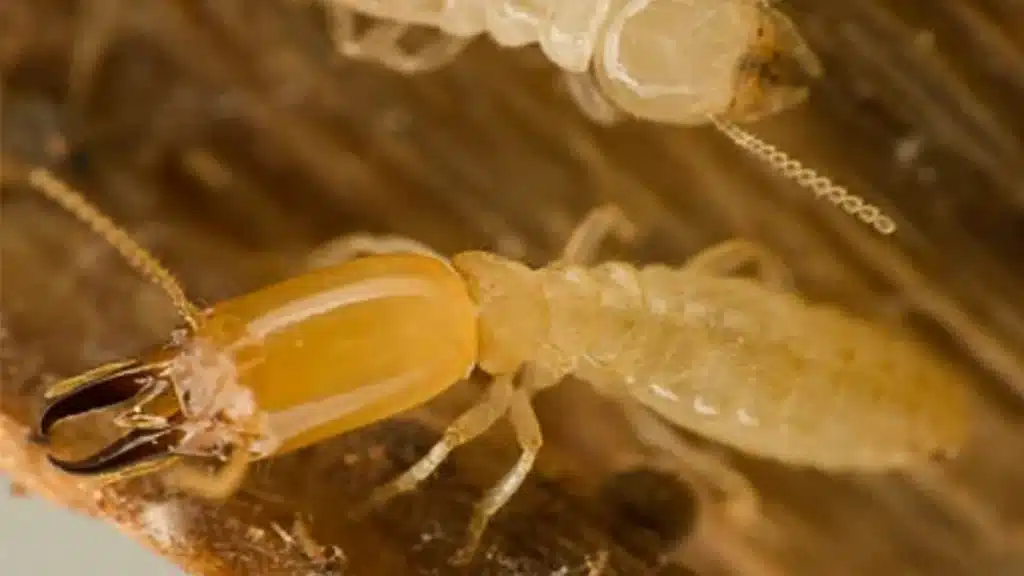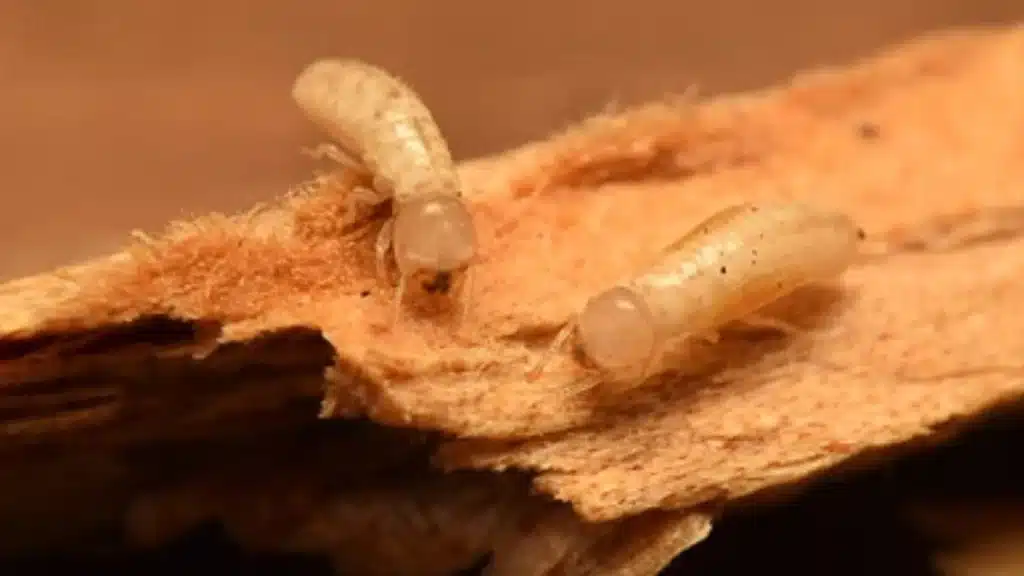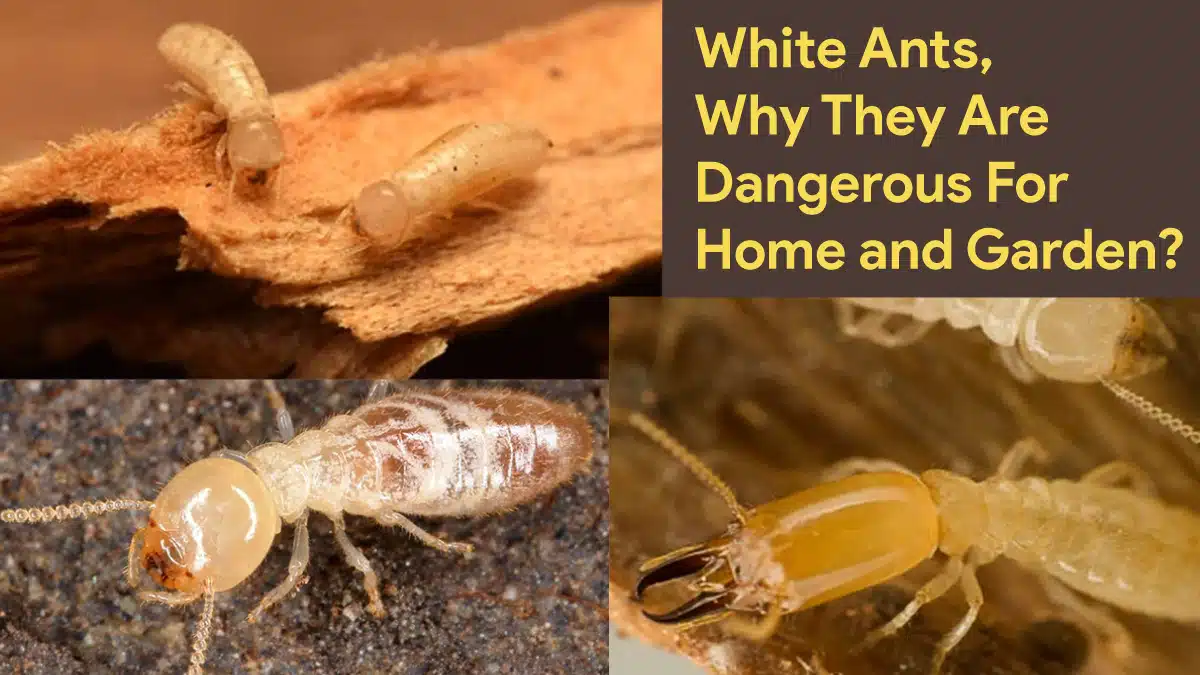“White ants” is a term that is sometimes used to refer to termites. Termites are a type of insect that lives in colonies and feeds on wood, causing damage to buildings and other wooden structures.
This article discusses white ants, their types, characteristics, and habitat.
Table of Contents
What are white ants?
White ants are an invasive species that can cause problems for plants and human health. These tiny insects have built nests beneath the ground, some larger than 300 square meters or as deep as 10 meters.
Plants they live on do not eat them; they only live off proteins extracted from them and the honeydew they secrete. White ants can cause significant damage if left unchecked, and they are most commonly found on citrus trees.
Types, Characteristics and Habitat of white ants
There are many species of termites, each with unique characteristics and habitats. Here are some general characteristics and habitats of termites:
Types:
- Subterranean termites are the most common type of termite, and they live in underground colonies. They build tunnels by moving through the soil and can also infest wooden structures=.

- Drywood termites: these termites live in dry wood and do not require contact with soil. They can be challenging to detect as they do not create mud tunnels like subterranean termites.

- Dampwood termites: as their name suggests, they prefer moist wood and are often found in areas with high humidity.

Characteristics:
- Termites have a similar appearance to ants but are lighter and have straight antennae.
- They have wings toughly the same size, and their wings are longer than their bodies.
- Termites feed on wood and other materials that contain cellulose.
- They live in large colonies with a strict caste system, which includes workers, soldiers, and reproductive termites.
Habitat:
- We found termites worldwide, most common in tropical and subtropical regions.
- They can be found in wooded and urban areas with wood or cellulose material.
Keeping wood away from your home’s foundation and maintaining proper ventilation to reduce moisture levels is vital.
The lifespan of white ants
The lifespan of termites, or “white ants,” varies depending on the species and the role within the termite colony. Here are some general guidelines:
- Workers: Workers are the most common type of termite responsible for gathering food and caring for the colony. The lifespan of a worker termite can range from several months to several years, depending on the species.
- Soldiers are larger and more heavily armoured than worker termites, and their lifespan is shorter. They live for several months to a year or more, depending on the species.
- Reproductive termites: The lifespan of reproductive termites, also known as swarmers, can be relatively short-lived. Their primary role is to mate and establish new colonies. Males can die within days or weeks, while females can live several years or more, depending on their species.
Termite colonies can last from species to species, depending on the size of the settlement and the surrounding environment. Though termite colonies can live for several years or decades, some species live for centuries.
What are the signs of white ants?
White ants can be challenging to detect as they often hide inside walls and other structures. However, several signs can show a termite infestation. Here are some common symptoms of white ants:
- Discarded wings: A Termite often tosses its wings after finding a suitable mate after swarming in large groups to establish new colonies. Seeing piles of discarded wings, especially near windowsills, doors, or other entry points, can show a termite colony nearby.
- Mud tubes: Subterranean termites build mud tubes by moving throughout, moving through the soil and reaching race. We often see these tubes on foundation walls, floor joists, and other wooden structures. It made tubes of mud and termite saliva and is about the width of a pencil.
- Hollowed-out wood: Termites feed on wood from the inside out, leaving behind a thin outer layer that can be easily punctured or broken. Tapping on a piece of wood that sounds hollow may be a sign of a termite infestation.
- Frass: Termite droppings, or frass, can accumulate near entry points, such as windowsills or baseboards. Frass looks like wood shavings or sawdust piles dust and can show an active termite infestation.
- Tight-fitting doors or windows: As termites eat away at wooden structures, they can cause them to warp or change shape. This can cause doors or windows to become challenging to open or close.
Do white ants bite humans?
Termites, or “white ants,” are not known to bite humans. Termites cannot bite or chew through human skin, as they designed their mandibles for eating wood and other cellulose-based materials.
Although termites can be harmful and damage buildings and other wooden structures, they do not threaten human health.
However, some people may be allergic to termite droppings, which can cause respiratory issues such as asthma or allergic reactions.
What attracts termites?
It attracted termites due to a variety of factors, including:
- Moisture: Termites require moisture to survive and are often drawn to areas with high humidity or moisture levels. Leaky pipes, standing water, damp basements, or crawl spaces can attract termites.
- Wood and cellulose materials: Termites feed on wood, paper, and other cellulose-based materials. We often draw them to wooden structures such as homes, sheds, and fences.
- Warm temperatures: Termites thrive in warm environments and are most active in spring and summer when temperatures are more generous.
- Cracks and openings: Termites can enter homes and other structures through small cracks and gaps in the foundation or walls. It also attracted them to areas where wood is in direct contact with soil, providing easy access to their food source.
- To swarm: They are usually subterranean and prefer to stay out of light, but they can fly towards bright lights, windows, and doors.
Final words
Termites, also known as “white ants,” are social insects that live in colonies and feed on wood and other cellulose-based materials.
There are different types of termites, including workers, soldiers, and reproductive termites.
The lifespan of termites varies depending on their role within the colony and the species.
Signs of a termite infestation can include discarded wings, mud tubes, hollowed-out wood, frass, and tight-fitting doors or windows.
It attracted termites because it was damp, had wood and cellulose, was warm, had cracks and holes, and let light in.
